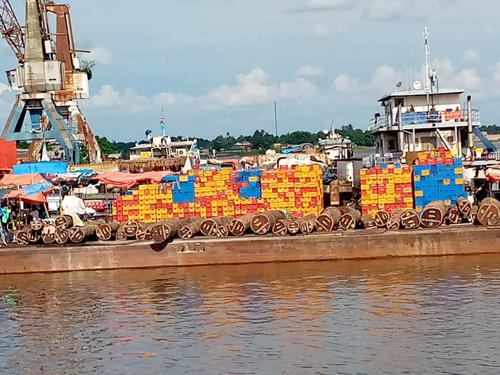In front of the office of the régie des voies fluviales at the port of Kisangani, a blackboard shows the level of the Congo River. The level of the river is 3 metres 43, below the normal level estimated at 5 metres for this time of year.
Dredging the river is also a problem at the height of the dry season, explains Ntambwe Emmanuel, a captain at the port of Kisangani. In the past, “the Régie des voies fluviales, which is responsible for maintaining the waterways, had sections everywhere. But at the moment, there’s only one boat leaving Kinshasa for Kisangani; the markings are not as they used to be”, he explains.
According to Ntambwe Emmanuel, the poor state of the trade routes from the east of the DRC is considerably reducing activity at the port of Kisangani. “Kisangani depends on the roads from the east, and when they are in good condition, products come in large quantities. The port is not maintained the way it used to be, even the cranes that used to work are now derelict, and trade has fallen off sharply.”
The logistical problems at the port of Kisangani are compounded by competition from small private ports built along the river. Bienvenu Tshikos is appealing to the authorities: “The government should help us to modernise this port so that we can face up to the competition that is already here; at least here we have services that capture revenue for the benefit of the province.
Built in the 1920s, the port of Kisangani no longer plays its role as a junction between the east and west of the DRC. The port’s activity has fallen by 30% to 40% between 2022 and 2023.
Source: Joseph Kahongo, RFI





